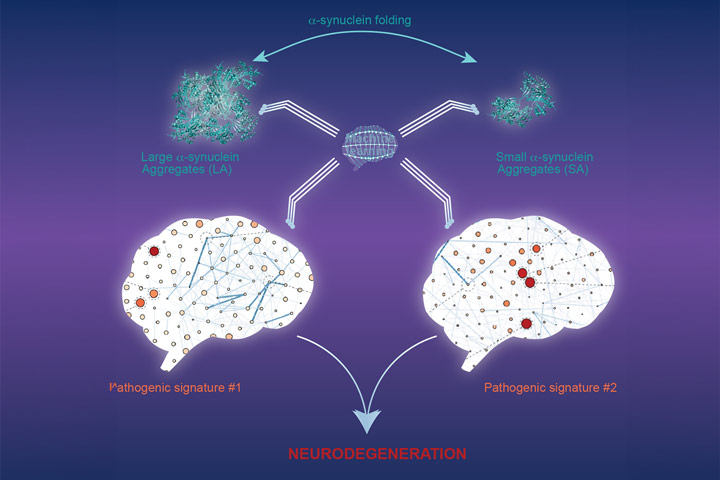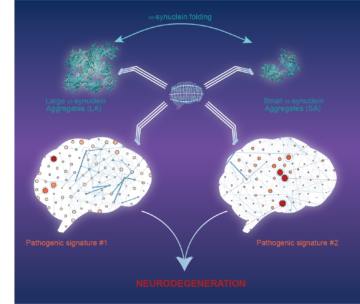
Distinct α-synuclein assemblies trigger distinct neurotoxic cellular pathways
Differential Pathological Dynamics triggered by distinct Parkinson patient-derived α-synuclein extracts in non-human primates.
Kinet R, Bourdenx M, Dovero S, Darricau M, Arotcarena ML, Camus S, Porras G, Thiolat ML, I. Trigo-Damas I, Bohic S, Morari M, Doudnikoff E, Goikoetxea M, Claverol S, Tokarski C, Kruse N, Mollenhauer B, Estrada C, Garcia-Carrillo N, Herrero MT, Vila M, Obeso JA, Bezard E, Dehay B.
Sci. Adv.11,eadu6050(2025).DOI:10.1126/sciadv.adu6050

Bordeaux, June 2025 – Parkinson’s disease is a neurodegenerative disease characterized by the progressive loss of dopaminergic neurons located in the substantia nigra pars compacta. This degeneration is responsible for part of the canonical clinical syndrome. In addition, there is a progressive accumulation of alpha-synuclein-containing proteinaceous aggregates, named “Lewy bodies”, in the patient’s brain. In a previous study, we showed that the injection of PD patient–derived α-syn in nonhuman primates has illustrated the exquisite vulnerability of primate dopaminergic neurons.
In this study, we aimed to elucidate the temporal and spatial pathological changes induced by two distinct α-syn pathogenic structures, having large or small sizes. Then, in order to unravel the underlying molecular pathways, we conducted a proteomic analysis of the putamen and the entorhinal cortex, two brain regions carrying significant α-syn pathology. We demonstrate that distinct assemblies of α-syn aggregates drive unique pathogenic changes that ultimately result in a comparable extent of nigrostriatal degeneration at the level of nigral dopaminergic neuron cell bodies and striatal dopaminergic terminals. More broadly, our findings identify pathogenic trajectories associated with large or small α-syn aggregates, suggesting the existence of several possible concomitant pathogenic routes in PD.
Last update 19/06/25
